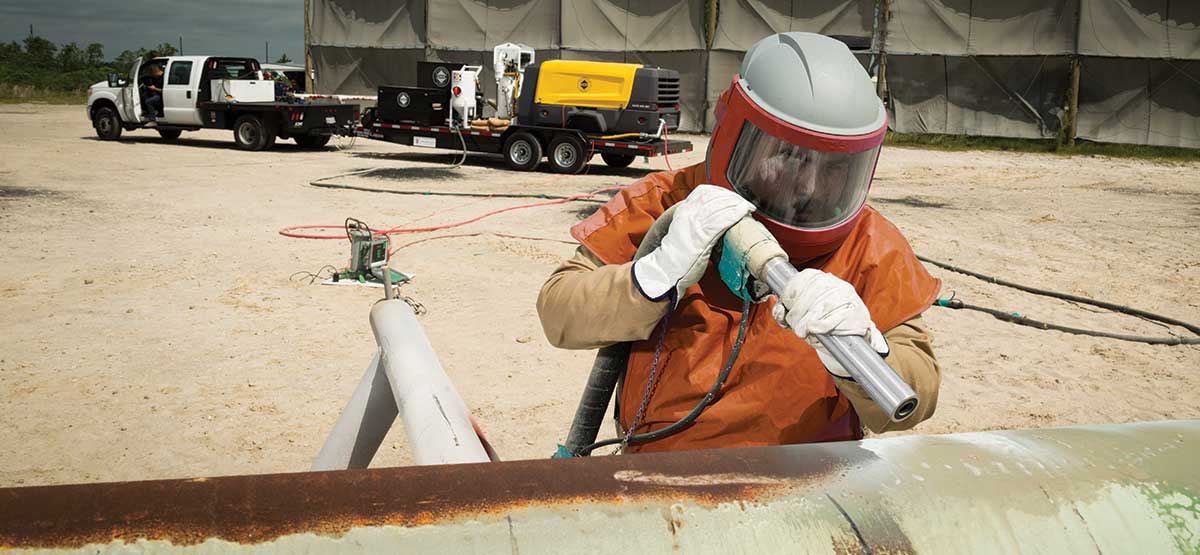In surface preparation and finishing, efficiency is everything. Whether you’re removing stubborn coatings, preparing a surface for a new finish, or cleaning delicate components, the abrasive media you choose plays a critical role in the outcome. Using the right high-performance blasting media not only saves time but also reduces operational costs and improves the quality of your work. However, with numerous options available, ranging from steel shot to glass beads, selecting the most effective one can feel overwhelming.
This guide will explore four practical ways you can enhance your operational efficiency by selecting and using high-performance blasting media. Understanding these principles will enable you to make more informed decisions, resulting in better outcomes, reduced material consumption, and a more streamlined workflow.
1. Match the Media to the Substrate and Application
The most fundamental step to boosting efficiency is selecting an abrasive that is appropriate for both the surface material (substrate) and the job you need to do. A mismatch can lead to wasted time, damaged parts, and unnecessary material consumption. For example, using an aggressive abrasive like steel grit on a soft aluminum surface can cause excessive pitting and damage, requiring costly rework. Conversely, using a soft medium like plastic beads on a heavily rusted steel beam will be incredibly slow and ineffective.
To optimize your process, consider the hardness of the substrate versus the hardness of the media. Harder media, like aluminum oxide blasting abrasive, are excellent for aggressively stripping hard surfaces and preparing them for coating, as they cut quickly and create an ideal anchor profile. Softer media, such as glass beads or even walnut shells, are better suited for cleaning, deburring, or finishing softer metals and composites without altering their dimensions. Taking the time to test different media on a sample piece can save hours of frustration and wasted resources down the line. Proper selection ensures you achieve the desired finish in the shortest amount of time, with minimal material usage.
2. Optimize Your Blasting Pressure and Abrasive Flow
Once you have the right media, the next step is to fine-tune your equipment settings. Many operators make the mistake of thinking that higher pressure always equates to faster work. While increasing air pressure can speed up the process, it also causes the abrasive particles to break down more quickly, turning them into dust. This not only reduces the working life of the media but also decreases visibility and can lead to a less consistent finish.
Instead of defaulting to maximum pressure, start lower and gradually increase it until you find the sweet spot—the lowest pressure that still provides an effective and efficient rate of cleaning or stripping. This is often referred to as the “threshold pressure.” Operating at this optimal level conserves compressed air, which is a significant operational expense, and extends the life of your blasting media. Similarly, adjusting the abrasive flow rate is crucial. A flow that’s too lean will be slow, while a flow that’s too rich will waste media and can clog the nozzle. Calibrating these settings for each specific job is a key practice for maximizing efficiency.
3. Implement a Media Reclaim and Recycling System
For many types of blasting media, single-use is incredibly inefficient and costly. High-performance, durable abrasives like steel shot, steel grit, and certain ceramics are designed to be used multiple times. By investing in a media reclaim system, you can significantly reduce your material costs and waste. These systems collect the used abrasive, separate it from dust and debris, and return the viable media to the blaster for reuse.
A good reclaim system can allow durable media to be recycled dozens, or even hundreds, of times before it becomes too small or rounded to be effective. For instance, studies have shown that recycling steel shot can reduce abrasive consumption by up to 95% compared to single-use abrasives like sand. This not only leads to massive cost savings on materials but also reduces the labor and expense associated with the cleanup and disposal of spent media. Even if you’re using a more brittle media, a reclaim system can help separate larger, still-usable particles, extending their life and saving you money.
4. Maintain Your Equipment and Use the Right Nozzle
Your blasting efficiency is only as good as the equipment you use. Worn-out nozzles, leaky hoses, and poorly maintained blast pots can drastically reduce performance and waste both media and compressed air. A worn nozzle, for example, will have a larger opening, which requires more compressed air to maintain the desired pressure and results in a less focused blast pattern. This means you’ll use more air and more abrasive to do the same amount of work.
Regularly inspect your equipment for wear and tear. Experts recommend checking your nozzle orifice daily; once it has worn by just 1/16th of an inch, it should be replaced. Choosing the right type of nozzle for the job is also important. Venturi nozzles, for instance, accelerate the abrasive particles over a longer distance, creating a wider, more even blast pattern that can increase productivity by up to 35% compared to straight-bore nozzles. Ensuring your compressor can supply adequate air volume (CFM) for your chosen nozzle is also critical for maintaining peak efficiency. Proper maintenance and smart equipment choices are simple yet powerful ways to ensure you get the most out of your high-performance blasting media.
In conclusion, optimizing your abrasive blasting process requires a combination of the right equipment, proper maintenance, and attention to operational details. By selecting the appropriate nozzle type, ensuring sufficient air supply, and maintaining your tools, you can achieve maximum efficiency and effectiveness. These practices not only enhance productivity but also extend the lifespan of your equipment, making them essential for any high-performance blasting operation.

